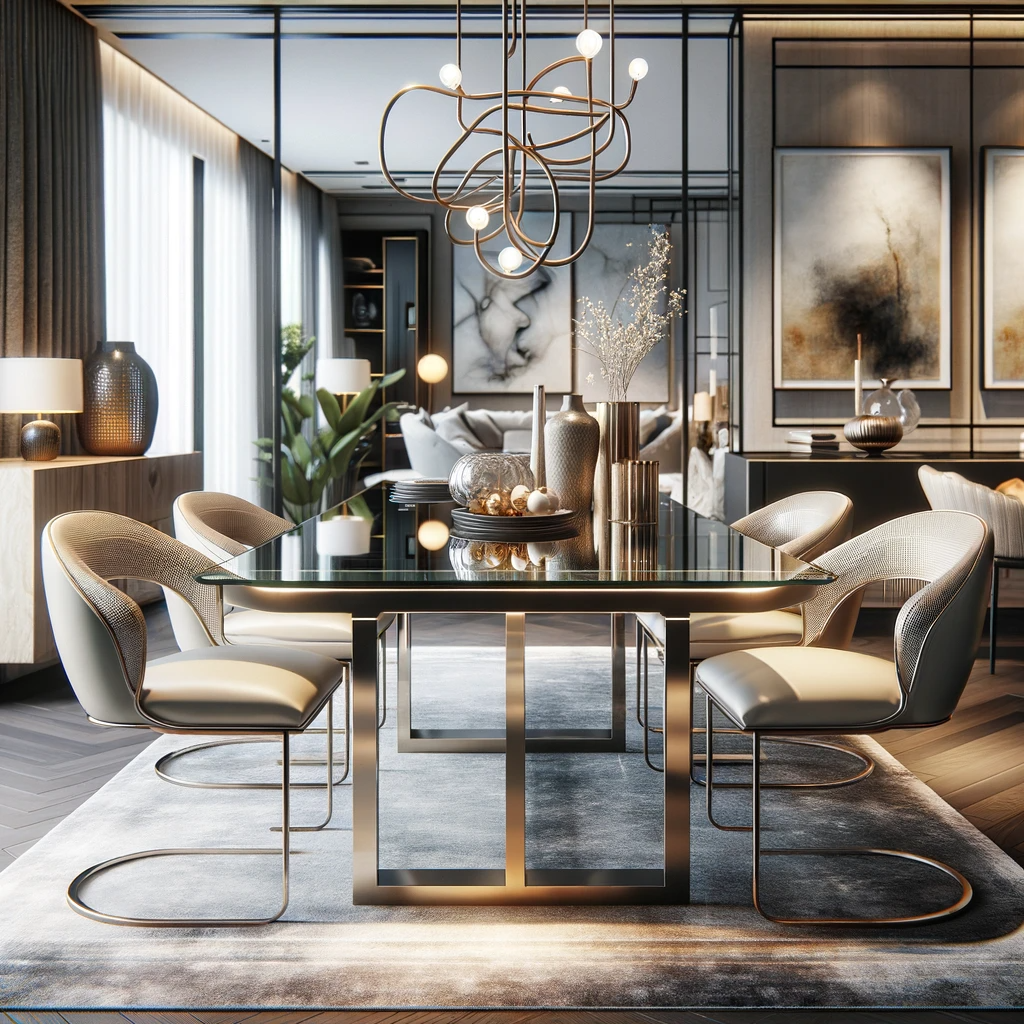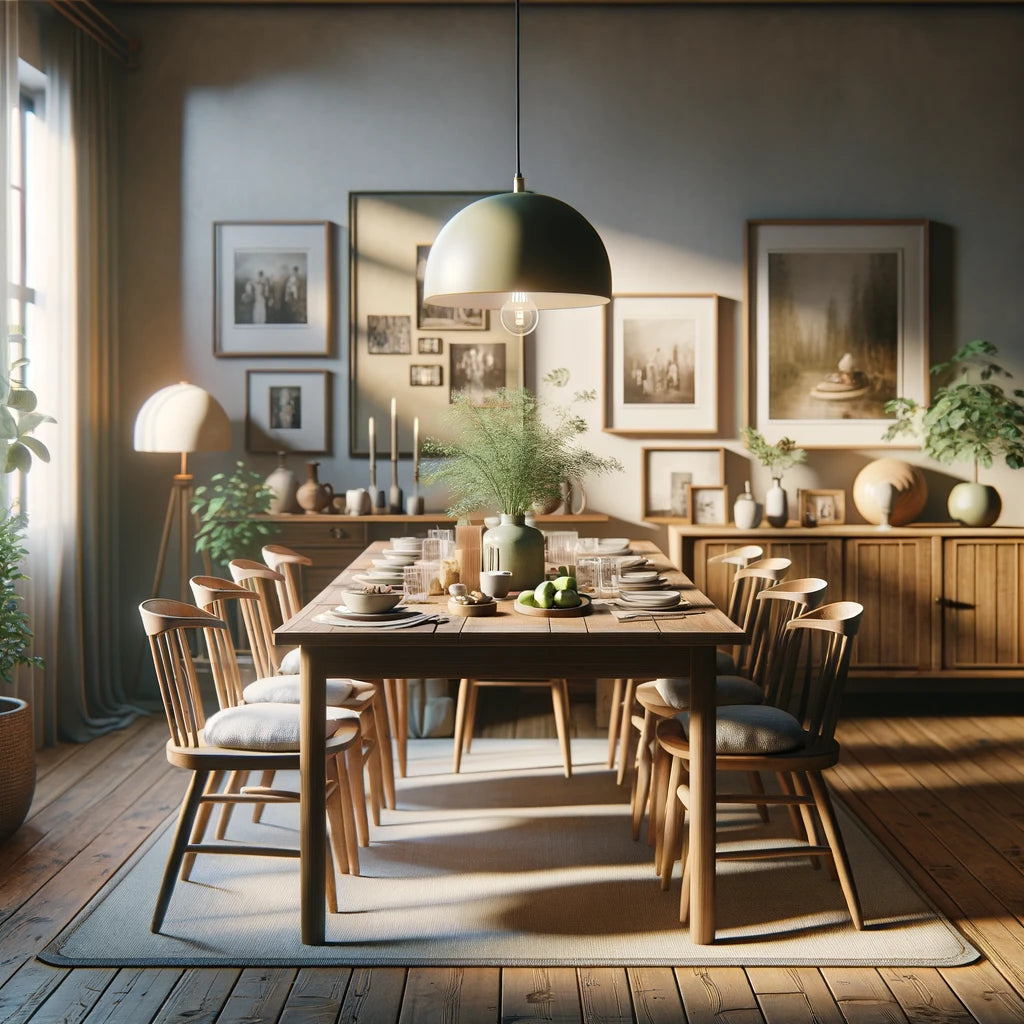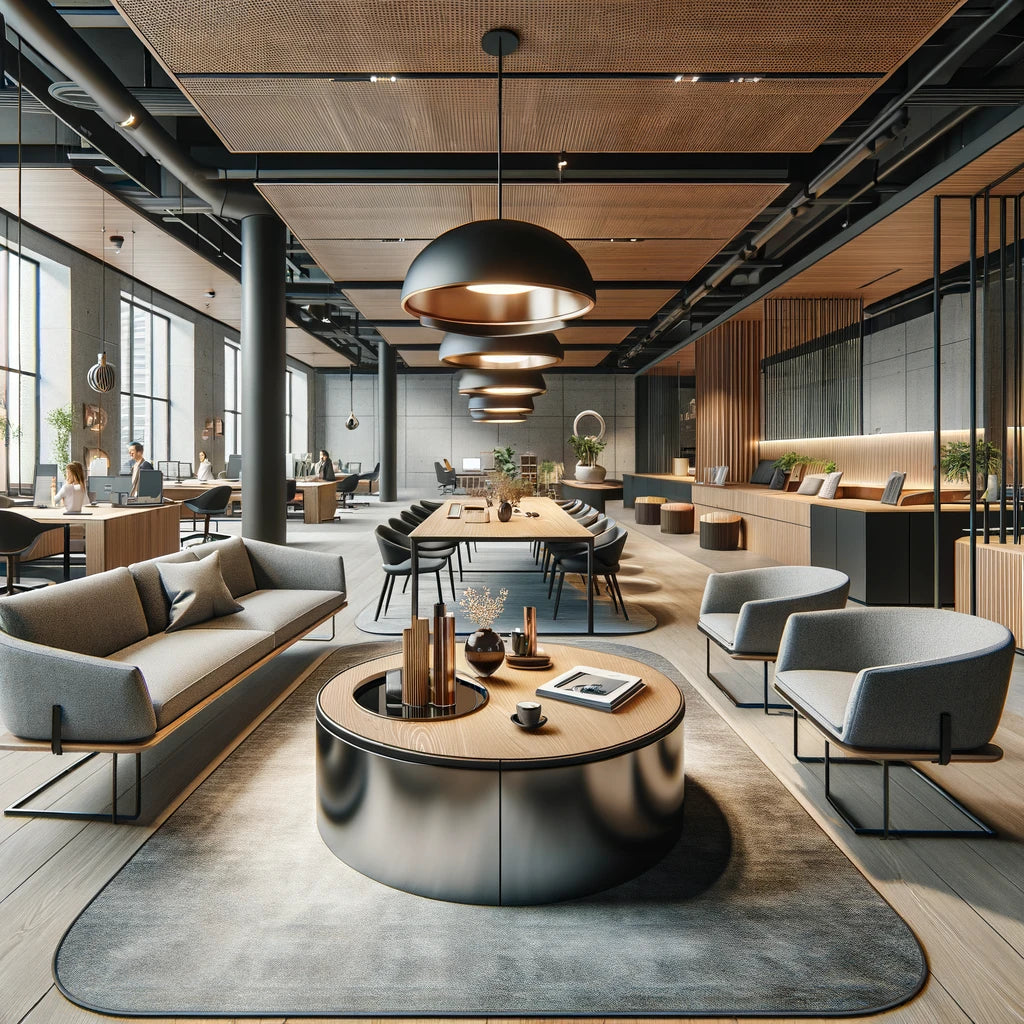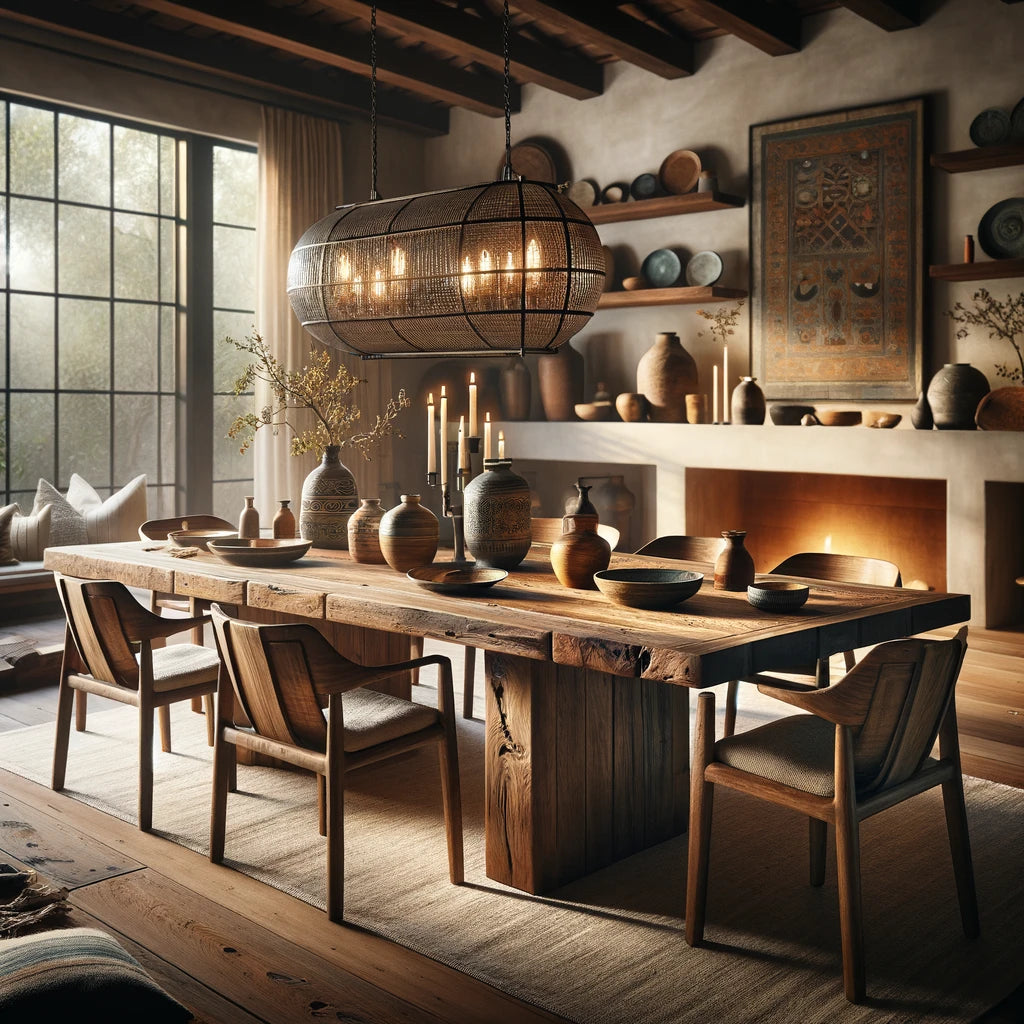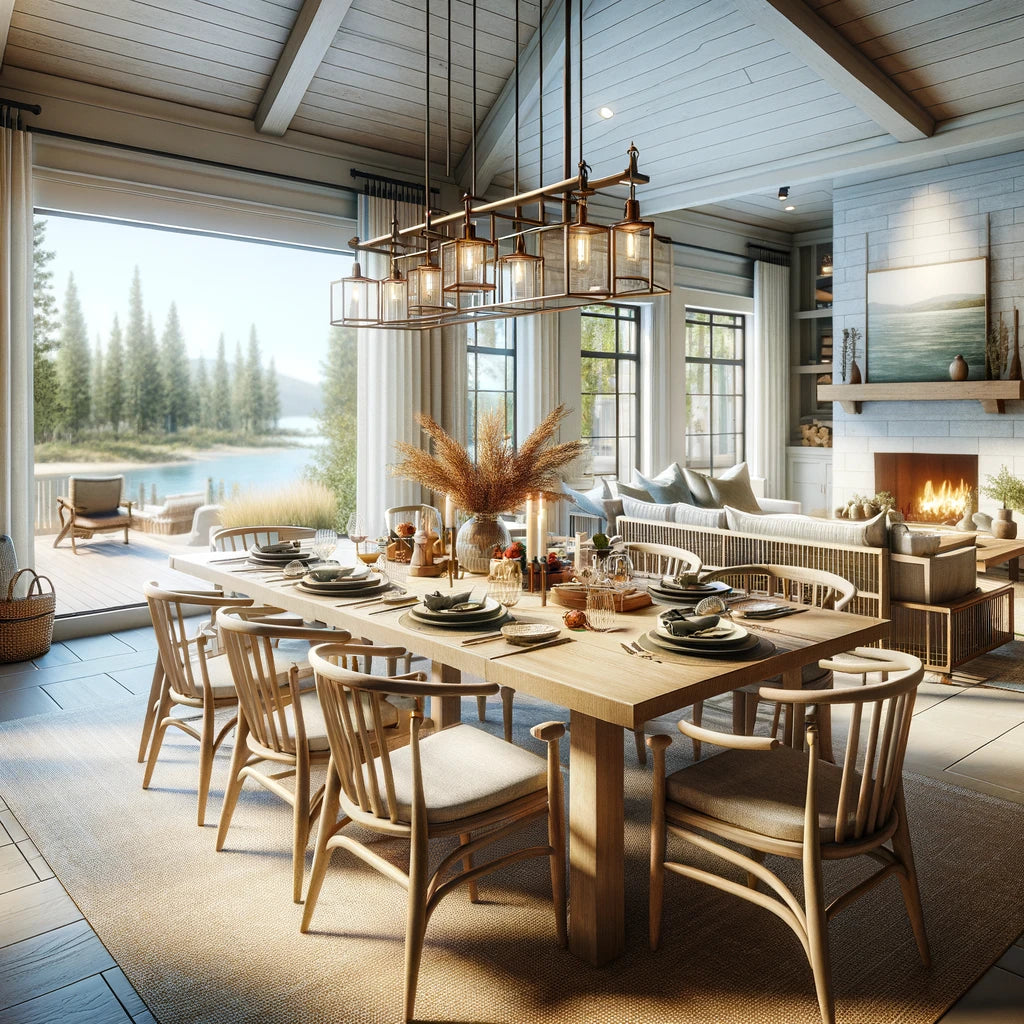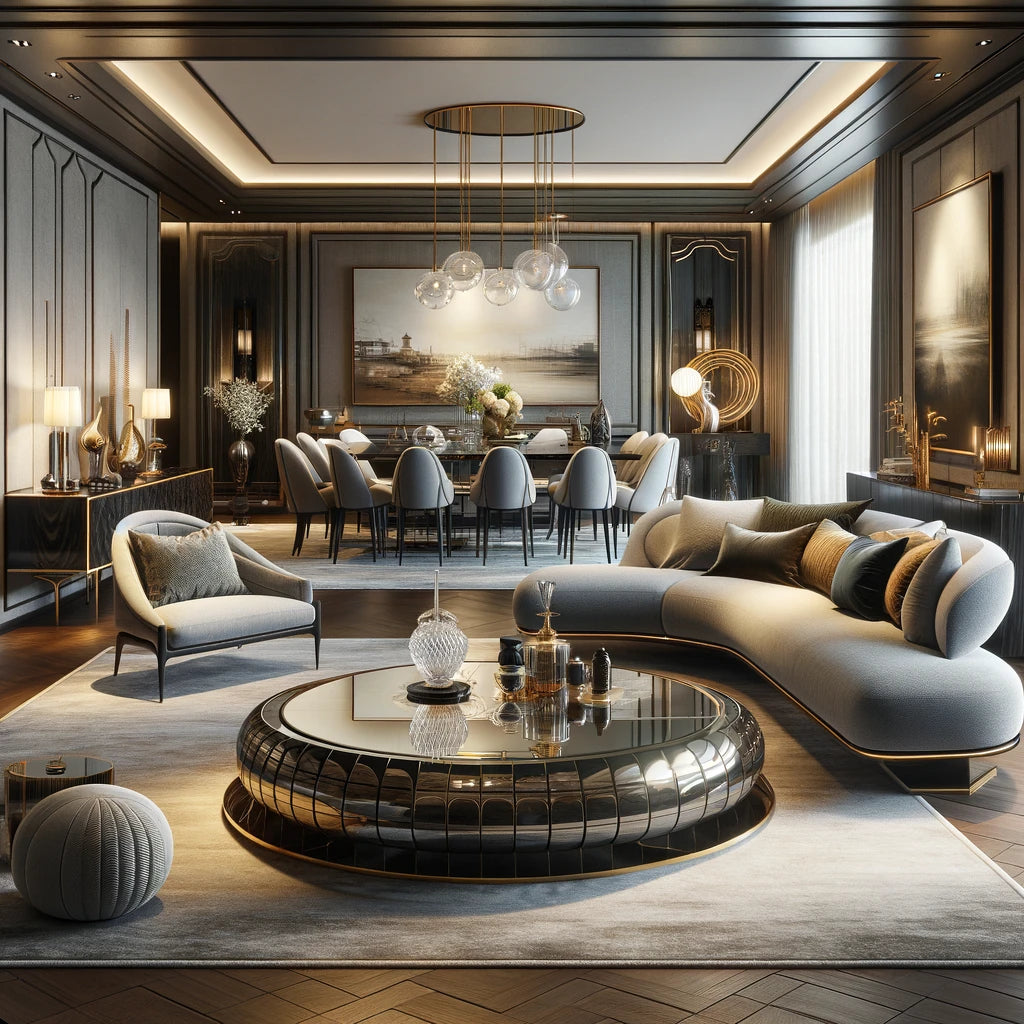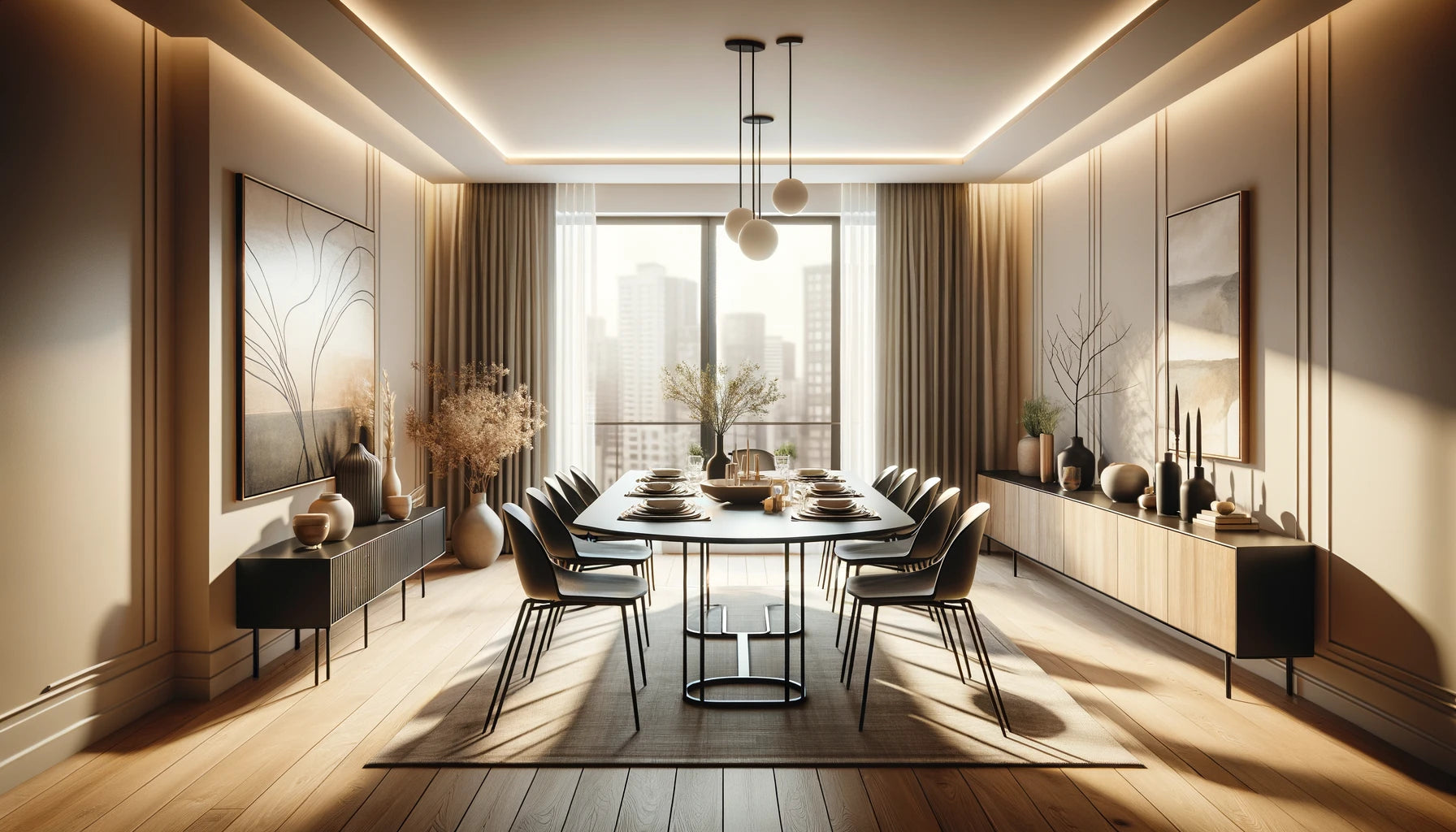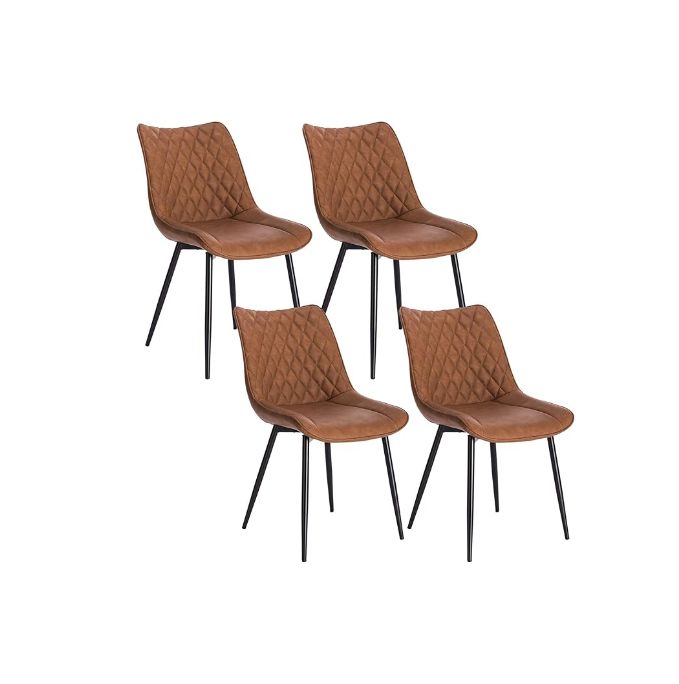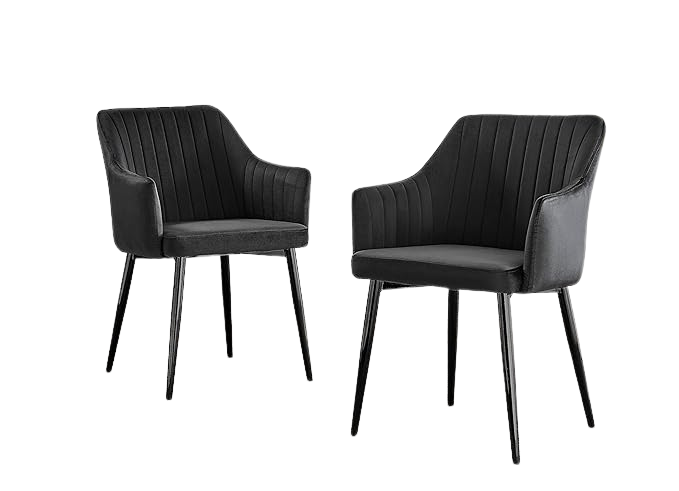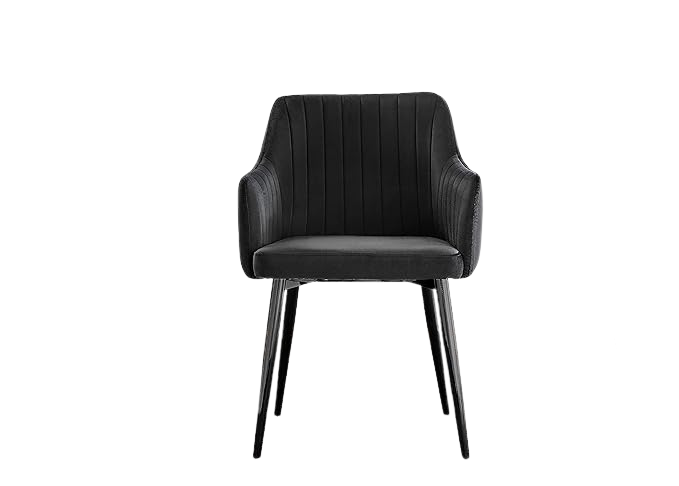Welcome to a captivating journey through the evolution of dining tables - an integral part of our homes and lives.
This exploration isn't just about furniture; it's a vivid reflection of societal evolution, encapsulating design trends, cultural shifts, and the transformation of a basic utility into a symbol of style and communal engagement.
From the rudimentary planks of the mediaeval era to the ornate masterpieces of the Renaissance and onto the sleek, functional designs of the modern era, each period offers a unique story about how dining tables have mirrored our changing world.
From Function to Form
The evolution of dining tables throughout history is a fascinating journey that reflects not only changes in design and craftsmanship but also societal shifts in how people used and perceived these essential pieces of furniture.
In the distant past, dining tables were primarily simple and functional. During mediaeval times, they were often nothing more than rudimentary planks of wood laid across trestles or other supports. These early tables were practical, serving the purpose of providing a surface for meals, but they lacked the aesthetic appeal and sophistication we associate with modern dining furniture.

The Renaissance era, which spanned from the 14th to the 17th century, marked a significant turning point in the history of dining tables. This period was characterised by a resurgence of interest in art, culture, and craftsmanship. As a result, dining tables underwent a remarkable transformation. Here are some key features of dining tables during the Renaissance:
- Ornate Designs: Dining tables of the Renaissance were characterised by intricate and ornate designs. Craftsmen began to incorporate detailed carvings, scrollwork, and decorative motifs into the table's structure. These artistic elements added beauty and complexity to the furniture.
- Luxurious Materials: Renaissance dining tables were often crafted from high-quality, luxurious materials like walnut, oak, and other fine woods. The choice of materials not only enhanced the table's durability but also contributed to its aesthetic appeal.
- Rectangular Shape: The rectangular dining table shape, which is still widely popular today, gained prominence during the Renaissance. This shape allowed for a more efficient seating arrangement and was better suited for communal dining.
- Elaborate Legs and Supports: Tables from this era featured intricately designed legs and supports. These supports often took the form of turned columns, cabriole legs, or carved pedestals. The craftsmanship in these elements showcased the skill and artistry of the furniture makers.
- Symbolism and Meaning: Dining tables during the Renaissance were sometimes imbued with symbolism and meaning. They could serve as status symbols, with their ornate designs and materials reflecting the wealth and social standing of their owners. Additionally, some tables featured religious or mythological motifs, reflecting the cultural and intellectual climate of the time.
The Renaissance era laid the foundation for the development of dining tables as both functional and decorative pieces of furniture. Over the centuries that followed, various design movements and innovations continued to shape dining table styles, ultimately leading to the diverse array of options we have today.

The Modern Era: A Fusion of Styles
The 20th century brought about a dramatic transformation in the world of furniture design, including dining tables.

This transformation was primarily driven by the advent of modernist design principles, which had a profound influence on the look and functionality of dining tables during this era.
- Clean Lines and Minimal Ornamentation: Modernist design, which emerged in the early to mid-20th century, prioritised simplicity, functionality, and minimalism. Dining tables of this period were characterised by clean lines and a deliberate lack of excessive ornamentation. The focus was on achieving a sleek, uncluttered appearance that emphasised the table's form and function.
- Functional Forms: Modernist dining tables were designed with a strong emphasis on functionality. Designers aimed to create pieces that were not only aesthetically pleasing but also practical for everyday use. This approach resulted in tables that were efficient, versatile, and adaptable to various dining needs.
- New Materials: The 20th century brought a significant shift in the materials used for dining tables. Traditional wood was no longer the exclusive choice; instead, materials like steel, glass, and plastic started to gain prominence. These materials allowed for innovative and unconventional designs, and they brought with them a fresh and contemporary aesthetic.
- Steel: The use of steel in dining table frames and legs provided stability and durability. It allowed for the creation of slender and minimalist designs that were both strong and visually striking.
- Glass: Glass tabletops became popular in modernist dining tables, adding transparency and a sense of openness to the furniture. The combination of glass with materials like steel or chrome created a striking contrast between the transparent surface and the metallic base.
-
Plastic: The introduction of plastic materials opened up new possibilities for designers. Moulded plastic chairs and tables became iconic symbols of mid-20th-century design, offering affordability and versatility.

-
Iconic Designs: The 20th century produced iconic dining table designs that are now considered classics of modernist furniture. Examples include the Eames Dining Table, with its sleek wood and steel legs, and the Barcelona Table, known for its minimalist elegance and use of steel and glass.

- Influence on Contemporary Design: The principles of modernist design continue to influence contemporary dining table design. Many current dining tables feature clean lines, minimalist aesthetics, and a mix of materials, reflecting the enduring impact of the 20th-century modernist movement.
Overall, the 20th century marked a significant departure from the ornate and traditional designs of the past, ushering in a new era of dining table design characterised by simplicity, functionality, and the use of innovative materials.
This modernist approach not only transformed the way we view dining tables but also continues to shape the furniture design landscape today.
Contemporary Innovations
In the contemporary era, dining table designs have reached a level of diversity and creativity that reflects the rich tapestry of design influences and materials available today.
These dining tables seamlessly blend elements of tradition with modern aesthetics, resulting in furniture pieces that are both functional and artistic statements in their own right.
- Fusion of Traditional and Modern: Contemporary dining tables often bridge the gap between traditional craftsmanship and modern design sensibilities. This fusion is achieved through the use of materials like veneers and solid woods. These materials, while rooted in traditional woodworking, are employed in innovative ways to create fresh and appealing designs that pay homage to craftsmanship of the past while embracing a modern style.
- Innovative Materials: Contemporary dining tables showcase the use of innovative materials beyond wood. For example, you may find tables with tabletops made of engineered wood, stone, or concrete, which not only add a contemporary flair but also provide durability and visual interest. These materials allow for unique textures and finishes that contribute to the overall aesthetic.
- Customisation and Personalisation: One of the remarkable aspects of contemporary dining table design is the level of customisation available. Manufacturers and artisans offer tables in various sizes, shapes, and finishes, allowing customers to tailor their dining tables to fit their specific needs and preferences. Customisation options include choosing the length of the table, selecting the type of wood or finish, and even deciding on unique leg styles.
- Artistic Statements: Contemporary dining tables often transcend their utilitarian purpose to become artistic statements within interior spaces. Designers and artisans experiment with shapes, forms, and decorative elements, pushing the boundaries of what a dining table can be. These tables can serve as focal points in dining rooms or open-plan living areas, contributing to the overall design and ambiance of the space.
- Integration with Interior Themes: Dining tables today are designed with an understanding of how they fit into broader interior themes and styles. Whether it's a farmhouse-style table that complements a rustic décor or a sleek, glass-topped table that enhances a modern minimalist setting, contemporary designs are adaptable and versatile, catering to a wide range of interior aesthetics.
- Sustainability: Many contemporary dining table designers and manufacturers prioritise sustainability by using eco-friendly materials, practices, and finishes. This commitment to sustainability aligns with the growing awareness of environmental concerns and the desire for responsible consumption.

A Case in Point
Our collection of custom dining tables that seamlessly integrates veneer and solid wood options is a prime illustration of the harmonious fusion of tradition and modernity within contemporary furniture design.
These tables exemplify how designers and craftsmen combine classic materials with contemporary design principles, resulting in versatile and appealing pieces that cater to a wide spectrum of aesthetic preferences.
- Veneer and Solid Wood Blend: These custom dining tables expertly incorporate both veneer and solid wood elements. Veneer, a thin layer of real wood applied to a stable substrate, allows for intricate patterns, wood grains, and finishes that are both visually pleasing and durable. Solid wood, on the other hand, represents the timeless appeal of traditional craftsmanship, showcasing the beauty of natural timber. This combination provides a balanced synthesis of old-world charm and contemporary durability.
- Catering to Diverse Aesthetics: The inclusion of both veneer and solid wood options within this collection means that it can cater to a wide range of aesthetic preferences. Those who appreciate the warmth and authenticity of solid wood can choose that option, while those seeking a more refined and diverse appearance can opt for veneer with its endless possibilities for finishes and patterns. This flexibility ensures that the collection can seamlessly fit into various interior design themes.
- Leg Styles and Customisation: Another noteworthy aspect of these custom dining tables is the choice of leg styles and the degree of customisation available. The diversity of leg styles allows customers to select the one that best compliments their vision for the table. Additionally, the customisation options extend to factors such as table length, finish, and other design details, demonstrating a commitment to accommodating individual preferences and modern living requirements.
-
Individuality and Modern Living: The emphasis on customisation speaks to the desire for individuality in modern living spaces. These custom dining tables are not just functional pieces of furniture; they are expressions of personal style and unique tastes. By allowing customers to tailor their tables to their exact specifications, the collection aligns with the contemporary mindset of creating living spaces that are reflections of one's personality and lifestyle.

The Future of Dining Table Design
Looking ahead to the future, the evolution of dining table designs is likely to reflect the ongoing shifts in our lifestyles, as well as the influence of technological advancements.
Here are some trends and developments we can anticipate in the world of dining table design:
- Sustainability: As environmental awareness grows, dining table designs are likely to incorporate more sustainable materials and production methods. We can expect to see tables crafted from reclaimed wood, bamboo, recycled materials, and other eco-friendly options. Sustainable practices will become a central consideration for both designers and consumers, aligning with the global push for a more environmentally responsible approach to furniture production.
- Space-Efficient Designs: With urbanisation and the trend towards smaller living spaces, dining table designs will need to accommodate these constraints. Tables that can be easily extended or folded, modular designs, and multi-functional furniture pieces will become increasingly popular. These innovations will allow people to make the most of limited space without sacrificing functionality.
- Integration of Technology: Dining tables may evolve to incorporate technology seamlessly into the dining experience. This could include the integration of wireless charging pads, touch-screen interfaces for meal planning or entertainment, or even smart tables that can adjust their height, lighting, or temperature according to user preferences. Technology will enhance the convenience and versatility of dining tables.
- Customisation and Personalisation: The trend towards customisation and personalisation is likely to intensify. Customers will have the opportunity to tailor their dining tables to their specific needs, whether that involves choosing the table's size, shape, materials, finishes, or even its technology features. This trend aligns with the desire for individuality in home furnishings.
- Innovative Materials: Advances in material science may introduce new, innovative materials that are not only sustainable but also offer unique properties and aesthetics. The use of these materials will provide designers with more creative freedom and open up new design possibilities for dining tables.
- Aesthetic Diversity: The future of dining table design will continue to embrace a wide range of aesthetics and styles. While some may prefer minimalist and contemporary designs, others may lean towards more traditional or eclectic options. Designers will cater to this diversity by offering a variety of design choices to suit different tastes and interior themes.
- Cultural and Lifestyle Influences: As cultural and lifestyle trends evolve, dining tables may reflect these changes. For example, tables designed for communal dining, shared workspaces, or specific cultural practices may gain prominence. These adaptations will cater to the evolving needs and preferences of different communities and demographics.

Conclusion
In conclusion, the evolution of dining tables is a remarkable narrative that intertwines design, culture, and functionality.
From their humble beginnings to their current status as central pieces in our homes, dining tables have continuously adapted to meet the needs and aesthetics of the times. Today, they stand as testaments to the fusion of traditional craftsmanship and modern innovation, reflecting our ongoing quest for beauty, utility, and personal expression.
As we look forward, the future of dining table design promises even more diversity and ingenuity, ready to embrace new materials, technologies, and evolving lifestyles.


